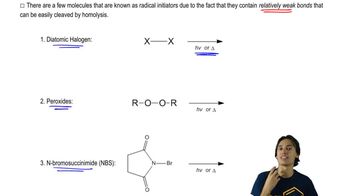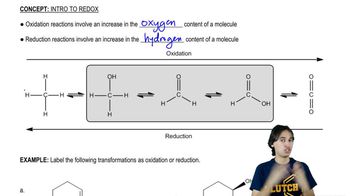For each reaction, show which stereoisomers are obtained
1. NBS/∆/peroxide
2. Br2/CH2Cl2
 Verified step by step guidance
Verified step by step guidance Verified video answer for a similar problem:
Verified video answer for a similar problem:



 2:05m
2:05mMaster The one reaction that alkanes will actually undergo. with a bite sized video explanation from Johnny
Start learning